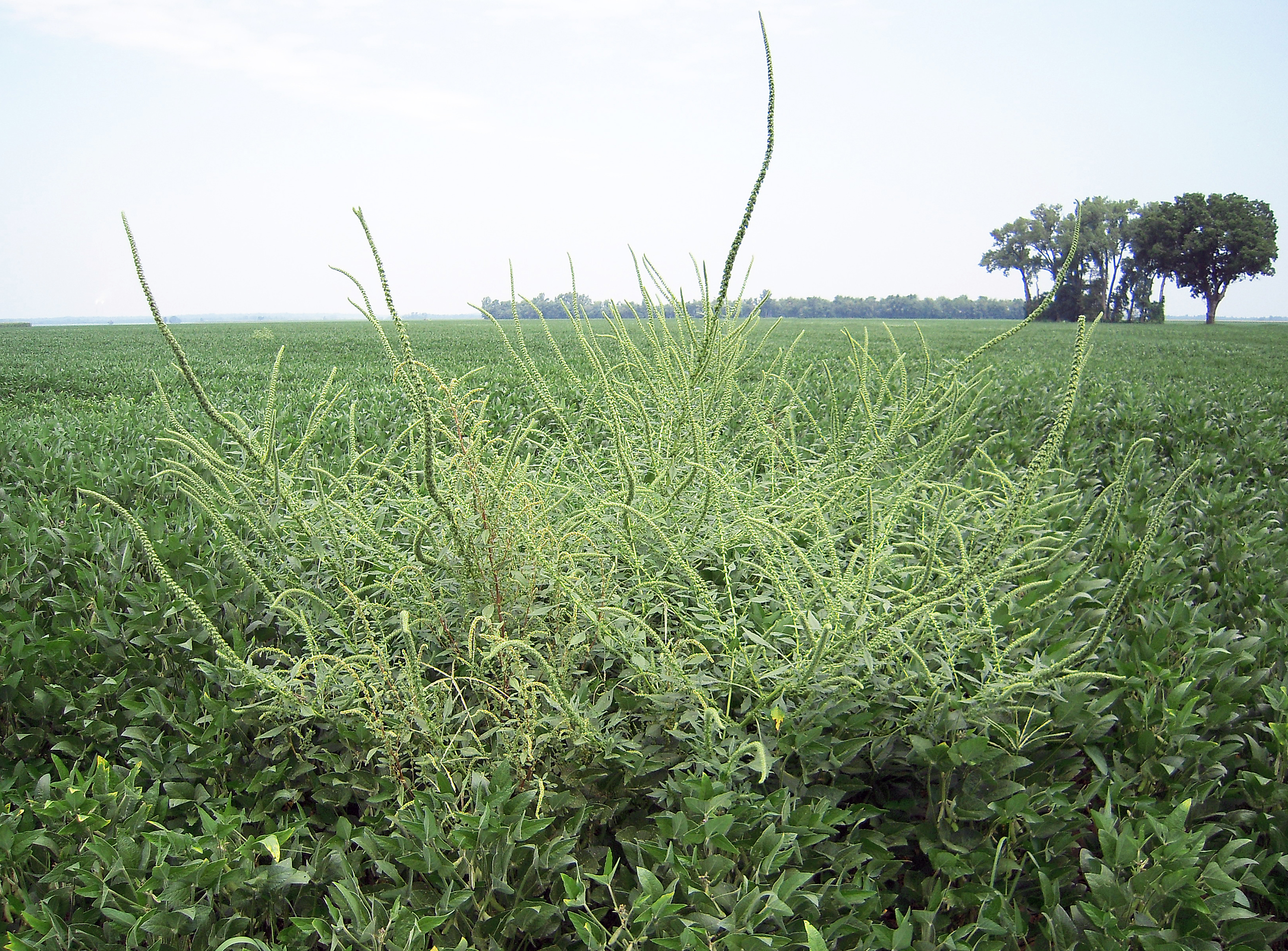Palmer Amaranth
A new noxious weed has emerged in Ohio called Palmer amaranth. Palmer amaranth looks like
many pigweed species and can reach a height of 6-8 feet tall and is extremely competitive and
aggressive. Sprague, 2011 at Michigan State reports: Palmer amaranth has a rapid growth rate
(up to 2.5 inches per day), high drought tolerance, and high seed production (40,000 seeds per
plant), has the ability to cross pollinate with other pigweed species and it has developed
herbicide resistance (roundup and/or ALS). Palmer amaranth has smooth stems and leaves with
no hairs that help to distinguish it from redroot pigweed, smooth pigweed, and Powell amaranth.
OSU Weed Scientist Dr. Mark Loux (CORN Newsletter) writes: The epicenter for new Palmer
amaranth infestations is in an area southwest of Columbus, bordered roughly by Midway on the
north and Washington CH on the south. There is a dairy in the area that has been using
cottonseed products for protein feed from the south, so try to avoid importing cottonseed. If you
farm in this area, be sure to take some time to scout fields and roadsides now for Palmer
amaranth and take appropriate action as necessary. Palmer amaranth is a prohibited noxious
weed in Ohio.
The Palmer amaranth plants found so far do not appear to have formed mature seed yet, which
would be indicated by the presence of small black seeds. The residual from pre-emergence
herbicides may have prevented the early flushes of Palmer amaranth and later-emerging plants
are still reaching maturity. This means that there is still time to dig up or chop down plants, and
ideally also remove them from the field. The weed control strategy changes from plant removal
to isolation and remediation of infestations once mature seed has formed.
The OSU weed science website (agcrops.osu.edu/specialists/weeds) has information on Palmer
amaranth, including a short video on identification and a new 11-minute video that explains the
risk from this weed. Similar information can be found on the Purdue weed science website. If
you find plants that you believe to be Palmer amaranth, please contact Dr. Mark Loux or the
Extension office to confirm identification and to manage new infestations.
The following was taken from a University of Florida fact sheet (SS-AGR-338) by Ferrell and
Leon (2011). All populations of this weed are not resistant to commonly used herbicides but
some populations are resistant. Since resistant pollen and seed moves so easily by wind and farm
machinery, it is important to consider all Palmer amaranth populations to be resistant until
proven otherwise. Some Palmer amaranth herbicide control programs in corn and soybeans can
effectively manage this weedy pest, but a "program" approach is essential to success. This means
that simply adopting Liberty Link technology, for example, is not sufficient by itself. The
technology must be used in combination with a well-planned burndown, pre-emergence, postemergence program. Targeting large weeds, regardless of herbicide resistance, can easily lead to
lack of control and lost crop productivity, so time post-emergence applications to small (1–3
inch) weeds.
Although some atrazine-resistant populations have been found, atrazine resistance is not as
widespread as ALS resistance (acetolactate synthase inhibitor, Pursuit, Scepter etc.) or
glyphosate resistance. So control is possible in corn production with atrazine as the key
component to a Palmer amaranth control strategy. Atrazine can be applied at a maximum rate of
2.5 lb active ingredient (ai)/A/yr if applied at two timings. No single application of atrazine can
exceed 2 lb ai/A.
If possible, soybeans should be planted in narrow rows (7.5 to 15 inches). Narrow row spacing
allows shading of the soil surface to occur faster and helps prevent Palmer amaranth seed
germination. There are many ways to manage herbicide-resistant Palmer amaranth, however; the
key to being successful with Palmer amaranth is to develop a diverse program approach. Having
a plan prior to planting that incorporates many herbicides or other techniques to control Palmer
amaranth will give the crop producer the best opportunity to maximize production and minimize
Palmer amaranth interference. In roundup ready (RR) soybeans, 2-4D plus Treflan or Prowl preplant plus Valor, Canopy, or Authority pre-emergence plus Dual Magnum, Cora, or Relfex postemergence is required. In Liberty Link soybeans, a similar program can be followed with
Liberty Link as the post-emergence herbicide. Do not let this weed go to seed because
controlling Palmer amaranth is expensive and time consuming. In places in the south, the weed
is so dense they have to use machetes to cut it down or the field is abandoned.
